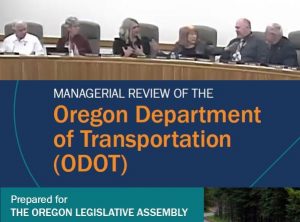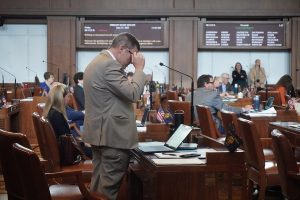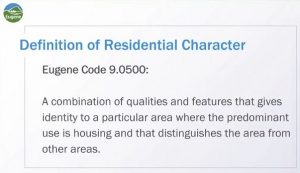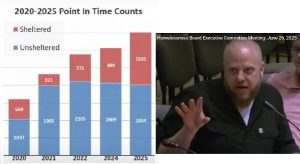Two members propose new Green constitution
7 min read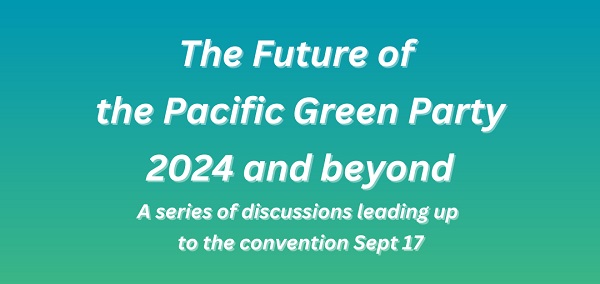
Two members say the future of Oregon’s Green Party is at stake. Dan Pulju and Brian Setzler are proposing a new Green constitution.
Dan Pulju (former Green candidate for U.S. Senate): Not everyone is really practicing grassroots democracy in good faith. There are people that believe that they should be in charge and believe that they should control what other people say, and this happens in a lot of organizations, and all the fighting that’s gone around it, is just a reflection of the organizational and process issues that we have within the (Green) Party and it manifests itself in trying to kick people out, expel members.
[00:00:40] What Brian (Setzler) told me, and caught my attention with his model, the distributed network, all you’ve got to do is say, ‘We people (three or more), we’re doing this, we call ourselves that, we’re a cell.’ He called it a cell. And then you just notify the state, like, ‘Hey, we exist.’ The state puts you on a list so everyone else knows you’re there.
[00:00:59] Brian calls this the distributed network model.
[00:01:02] John Q: With his proposal for a new Green constitution, Brian Setzler.
[00:01:07] Brian Setzler (former Green candidate for Portland city auditor): What happened in the previous situation is, again, the system causes behavior, the system, the mental models and beliefs that we’re operating with: ‘They’re the ones who get to decide. They’re the ones who control everything.’ And you know, each side would tell a story.
[00:01:23] And then what happens is, it’s called escalation, and each side feels threatened, and each side keeps escalating. And the only way to get out of that system dynamic is to step out and say, ‘We’re not going to do it.’ Otherwise, it just keeps escalating. And so I believe the system, the structure of our party, caused that conflict…
[00:01:48] We commit to resolving things in a healthy way and there are many ways to do that, but it takes people to step up and step into that conflict resolution process. And I put in here, ‘Ideas for settling disputes include but are not limited to mediation, restorative circles, the four-fold way, dialog circles, understanding and avoiding escalation, walking away from the contract, etc.’
[00:02:16] I lived in a community that operated on consensus and conflict happened all the time, and when we had conflicts in our community, we would do a talking circle. We get together, we’d all sit in a circle and we would pass the talking stick. It just went around in a circle. And in the spirit of dialogue, you’re not talking to any one person. You’re really talking to the center of the room and you’re speaking your truth; talk about what has heart and meaning to you; listen with empathy. And as that went around, people could walk away and feel better and more listened to and more understood.
[00:02:56] And I think in this cellular network, what we want to do is have—we want to be cells that attract other cells and you do that by being empathetic, by listening, by being good team players, by developing trust, by being trustworthy and people who don’t develop those skills and cells that don’t have those skills are going to be much more isolated, in an isolated cell.
[00:03:24] When we get this network to be 500-1,000 people, and there’s 200-300 cells operating, if one cell is over there, not playing fair with the ball, they’re just going to be isolated to nothing. And then who cares?
[00:03:38] And I want to grow the (Green) Party. I go out to the high school classes every year. I’ve probably talked to 30, 40 high school classes over the years. And I just got invited again to a class down in Milwaukie. And I’d love to say to those kids, when I’m talking to them, join the Green Party. If you liked these values, join the Green Party. And here’s what you do to form a cell and you do something, do something to make the world greener.
[00:04:04] And I could, I can think of 100 things, but only you are going to know what’s motivating you and inspiring to you. And if you can’t think of anything else then join, help another cell do something, then this’ll be dynamic and growing.
[00:04:20] And that’s what the Green Party was about when I got in it 30 years ago was, we saw ourselves as building an alternative that could replace this mess out here when it collapsed. We say, ‘Do something to make the world greener. You can join with us. You can form your own cell with three other people, two or three other people. You can grow that cell and you can work on something that interests you, you can plug in as a group.’ Because there’s so much more power when you show up and you know that I’m not just showing up to do one thing.
[00:04:58] Let’s say tomorrow morning we’re going to go feed the homeless. I’ve done it. I go down there. I join with people I don’t know. And afterwards we’ll have a beer. The next day, we’re picking up litter and then we’re going to make a record, ’cause we love music. You know, it’s just got so much dynamism, what we can do. And then all of a sudden, if one day it’s like, ‘Hey, I’m more interested in what this other group is doing,’ I can easily walk out of one group and they do another. It’s flexible. It’s really how the natural world works.
[00:05:30] It’s based on what’s known as complex adaptive systems and it’s a living system model. It applies to biology, to how rivers work, I mean, there’s so many things that work along this way. And if you Google ‘complex adaptive systems,’ it’s an incredible deep rich history.
[00:05:51] It’s about communication, cooperation, specialization, spatial and temporal orientation, reproduction—it benefits us on so many different levels and it allows people to do what’s called ‘walking with your feet.’ Self-organizing. It’s one of the most powerful things in paradigms, in organizations, the ability to self-organize and adapt as the world changes and as the dynamics change. But I believe when we, again, build trust and unity about being Green—
[00:06:23] One of the most important things that I think in my learning and stuff along the ways is that the way movements happen that spread across the world like Christianity, like the industrial revolution. That started as an idea someplace and spread across the world and pretty rapidly is through what’s called a spreading mechanism.
[00:06:44] So an idea has to get into somebody and then it has to have the ability to spread. What I like about the cellular model and the complex adaptive system in our ability to grow is that it’s, I can go out to anybody and pass that on and they can become a new little pod that puts down some roots and starts growing.
[00:07:07] I would just say: Every single thing we do will be improved by the structure that I’m suggesting, okay? I guarantee it. And it’s intuitive to me. It’s just, it’s the way the world works. It’s a living system model. And when we embrace it and just start going about doing things, we’ll be surprised at what happens. But it’s like planting a seed.
[00:07:37] So right now we have a dysfunctional system that has a 20-year track record. System thinkers point out what’s called the iceberg model, which is, we see the events that are happening at the surface. One of those events was this conflict, but I’ve seen over 20 years, I’ve seen 50 conflicts like that, that have blown this party apart, over and over and over again. And so using the iceberg model, you go under the structure of the iceberg and see what are the systems structures that are causing it? What are the mental models that are keeping those in place? And that is, that ‘we have to have a hierarchy,’ that ‘we have to be organized this way,’ that we have to control things. And I’m just trying to release that.
00:08:27] Dan Pulju: You don’t need a hierarchy, with someone in charge to tell you what to do. You just do things. That’s what grassroots organization is. People just group together as they see fit, do stuff, and they communicate with each other, sideways. You don’t have to have someone in the middle saying, ‘Okay, well, here’s the forum and here’s the forum rules and you can’t say this or that.’ There are people who are actually motivated to pay attention and are working positively with each other as the model is intended, and they are able to recognize that.
[00:08:57] So in a hierarchy, like a bureaucracy, you always have people jumping up, saying, ‘This person has to be kicked out.’ In a distributed network, the agitators get recognized and they get marginalized by, simply people don’t want to work with them, and so they end up off to the side somewhere. Yes, they’re members of the party, but it becomes obvious to anyone that pays even the slightest attention that they don’t actually represent the party.
[00:09:21] John Q: With the future of the Green Party at stake, two members propose a new Green constitution. They will present it in convention next month. For more, see https://www.pacificgreens.org.
